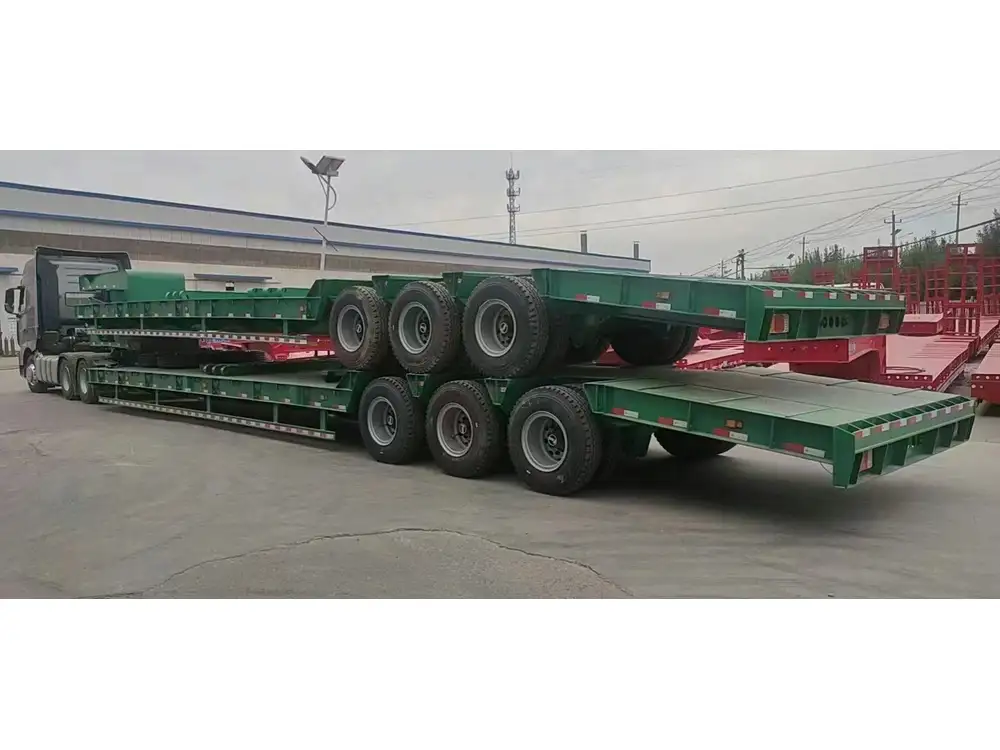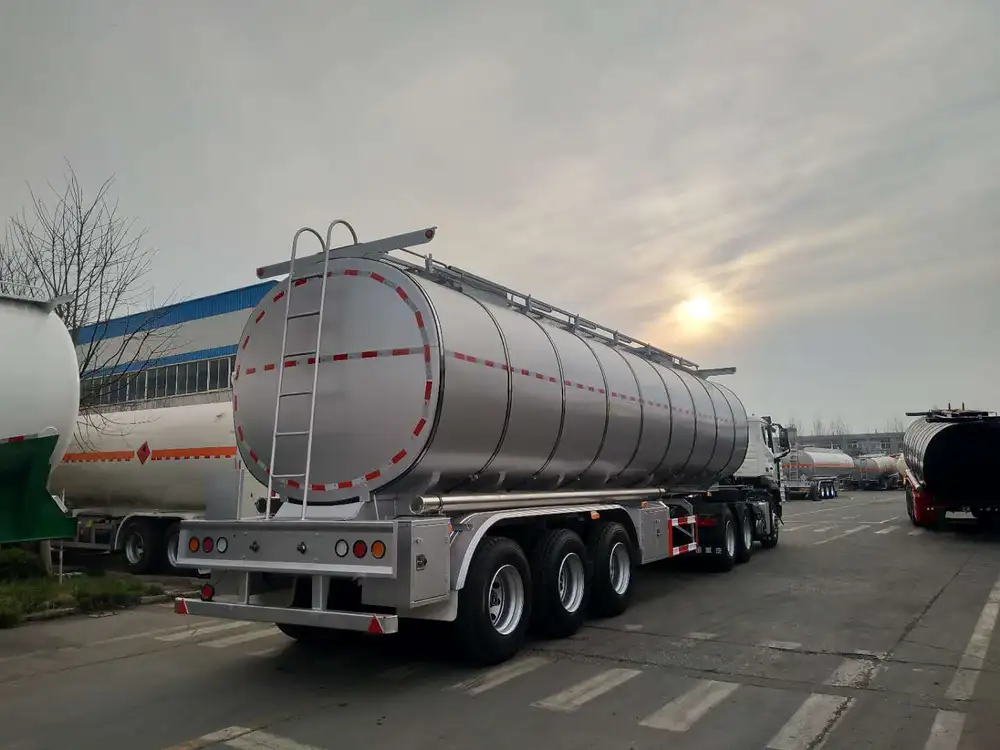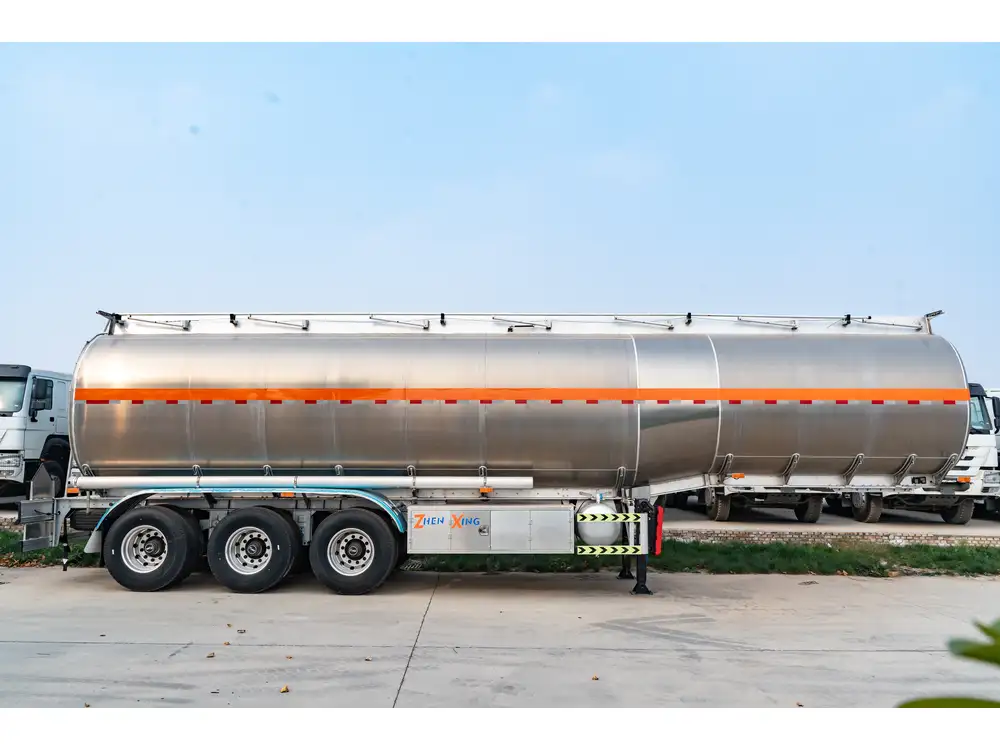When navigating the complex world of trucking and transportation, one fundamental question arises: how much does a semi-trailer weigh? The weight of a semi-trailer is not merely a number; it influences regulations, safety measures, efficiency, and logistical planning. In this detailed exploration, we will dissect various elements concerning the weight of semi-trailers, providing clarity and insights that can empower manufacturers, operators, and logistics managers alike.
Overview of Semi-Trailer Types and Their Weights
Semi-trailers come in various configurations, each designed for specific applications. The following table provides an outline of commonly used types of semi-trailers along with their average weights:
| Type of Semi-Trailer | Typical Weight (lbs) | Description |
|---|---|---|
| Flatbed Trailer | 5,000 – 10,000 | Ideal for transporting heavy equipment and large materials. |
| Refrigerated Trailer | 12,000 – 16,000 | Used for perishable goods, equipped with refrigeration units. |
| Dry Van Trailer | 10,000 – 15,000 | Enclosed trailer for general cargo, offering protection from elements. |
| Tanker Trailer | 10,000 – 25,000 | Designed for transporting liquids, weight varies based on tank size. |
| Lowboy Trailer | 15,000 – 25,000 | Specialized for transporting heavy machinery with a lower deck. |
| Car Hauler | 7,000 – 12,000 | Designed specifically for transporting vehicles. |
Impact of Trailer Design on Weight
The design of a semi-trailer has a significant bearing on its weight. Here are several factors influencing how much a semi-trailer weighs:
Material Composition:
- Steel Trailers: Typically heavier due to their durability but can increase fuel consumption.
- Aluminum Trailers: Lighter and more fuel-efficient, aluminum is popular for fleet mobility.
- Composite Materials: Use of fiberglass and other advanced materials balances weight and strength.
Length and Configuration:
- Longer trailers tend to weigh more, particularly when considering the additional axles necessary for balance and support.
- Specialized trailers, which include features like stretch designs or multi-level configurations, will vary significantly in weight.
Added Equipment:
- Trailers fitted with extra features like loading ramps, winches, or specialized insulation incur additional weight.
Tire and Axle Selection:
- The types and sizes of axles, along with tire specifications, can also affect the overall weight of the semi-trailer.

Regulatory Considerations and Weight Limits
Adhering to federal and state regulations regarding weight limits is crucial for safety and compliance. In the United States, the Federal Highway Administration (FHWA) establishes certain weight limits that semi-trailers must abide by:
- Gross Vehicle Weight Rating (GVWR): The total weight a vehicle is rated to safely carry, which includes the weight of the tractor, trailer, cargo, and fuel.
- Bridge Formula: Determines safe weight limits based on the spacing of axles to prevent excessive road damage.
Typical Semi-Trailer Weight Limits
Most semi-trailers fall within the following GVWR guidelines:
- Standard Semi-Truck: 80,000 lbs (maximum weight).
- Single Axle Trailers: 20,000 lbs maximum.
- Tandem Axle Trailers: 34,000 lbs maximum.
Failure to comply with these regulations can result in hefty fines and penalties, as well as risking road safety for everyone involved.
Calculating the Weight of a Semi-Trailer
Calculating the weight of a semi-trailer requires consideration of several variables. Here’s a simplified approach to calculate the total weight:
- Identify the Weight of the Empty Semi-Trailer: Use manufacturer specifications for accurate empty weight.
- Add the Weight of Cargo: Calculate the weight of the load being carried, ensuring it falls within legal limits.
- Include Additional Equipment: Factor in any extra components or products that may affect overall weight.
- Allow for Fuel: Payload can also consider the weight of fuel, typically varying based on the operational range of the truck.

Weight Calculation Example
For instance, let’s say you have a dry van semi-trailer with the following:
- Empty Weight: 12,000 lbs
- Cargo Weight: 30,000 lbs
- Additional Equipment: 1,000 lbs
- Fuel Weight: 500 lbs
Total Weight Calculation:
[ \text{Total Weight} = \text{Empty Weight} + \text{Cargo Weight} + \text{Additional Equipment} + \text{Fuel Weight} ] [ \text{Total Weight} = 12,000 + 30,000 + 1,000 + 500 = 43,500 \text{ lbs} ]This semi-trailer would be within the permissible limits, allowing safe transportation.
Effects of Weight on Performance
The weight of a semi-trailer significantly impacts various operational aspects:

Fuel Efficiency
- Higher Weight Equals Higher Fuel Consumption: The heavier the trailer, the more fuel the tractor has to exert to move it, affecting overall mileage.
- Weight Distribution Matters: Unevenly distributed weight can lead to increased tire wear and unnecessary fuel use.
Safety and Stability
- Braking Distances: Heavier trailers increase stopping distances, making proper load management critical for road safety.
- Towing Capacity: Not all tractors can adequately handle heavy semi-trailers; understanding the truck’s specifications is vital.
Compliance with Regulations
Maintaining appropriate weight is not just a matter of efficiency; it ensures compliance with local and federal laws, thus avoiding fines and road safety issues.

The Future of Semi-Trailers: Weight Reduction Innovations
As the industry strives for improved efficiency and sustainability, innovative technologies and methodologies are emerging to reduce the weight of semi-trailers without sacrificing strength. Here are some evolving trends:
Advanced Materials
- Carbon Fiber and composite materials: Offer significant weight reductions and enhance structural integrity.
- Lightweight Body Designs: Use of design techniques such as optimization algorithms that help create weight-efficient structures.
Enhanced Aerodynamics
- Streamlined Shapes: Reducing drag can improve a truck’s fuel efficiency; therefore, semi-trailer designs are increasingly incorporating aerodynamic principles.
- Add-on Devices: Using side skirts and cab extenders can further optimize airflow around the trailer.

Smart Technologies
- Weight Monitoring Systems: Advanced sensors installed in trailers help monitor weight in real time, alerting drivers about load distribution or overload risks.
- Telematics: Provides analytics on fuel efficiency, weight management, and operational performance.
Conclusion: Navigating the Weight Landscape of Semi-Trailers
Understanding how much does a semi-trailer weigh encompasses more than merely learning about numbers. It’s an intricate dance involving material science, regulatory compliance, operational safety, and future advancements. Every stakeholder in the transport industry, from manufacturers to logistics managers, must approach this question with a comprehensive understanding of its implications.
By equipping ourselves with knowledge and staying informed about the latest developments, we can navigate the weight landscape of semi-trailers more effectively, ensuring safety, efficiency, and regulatory compliance every step of the way.



